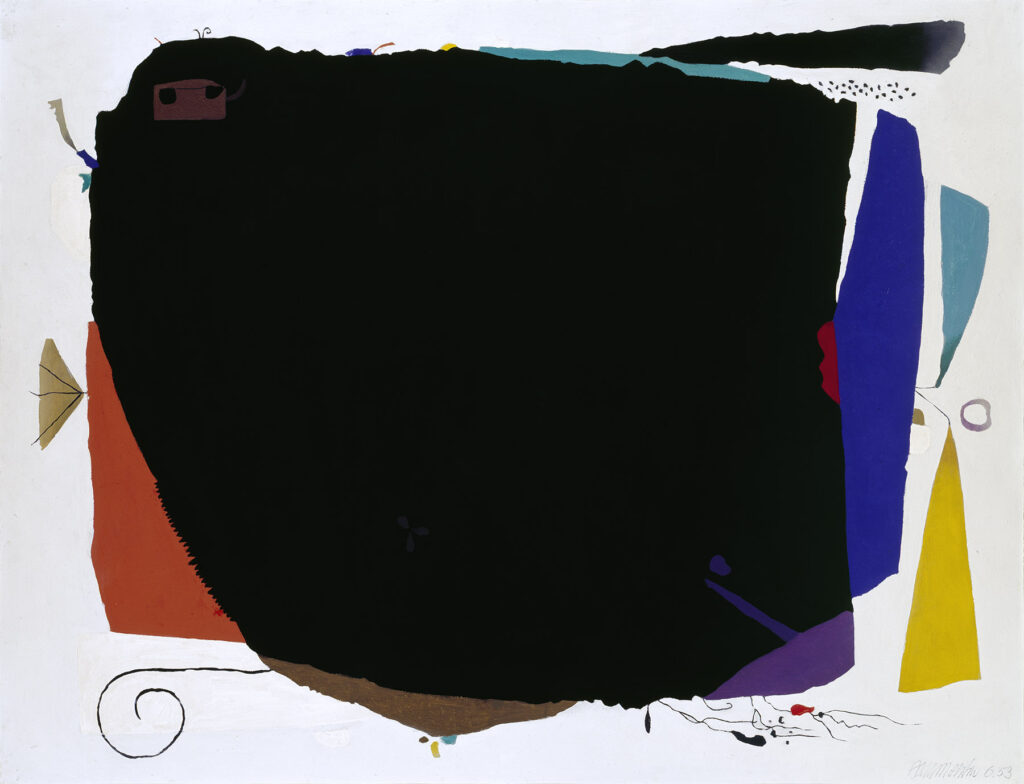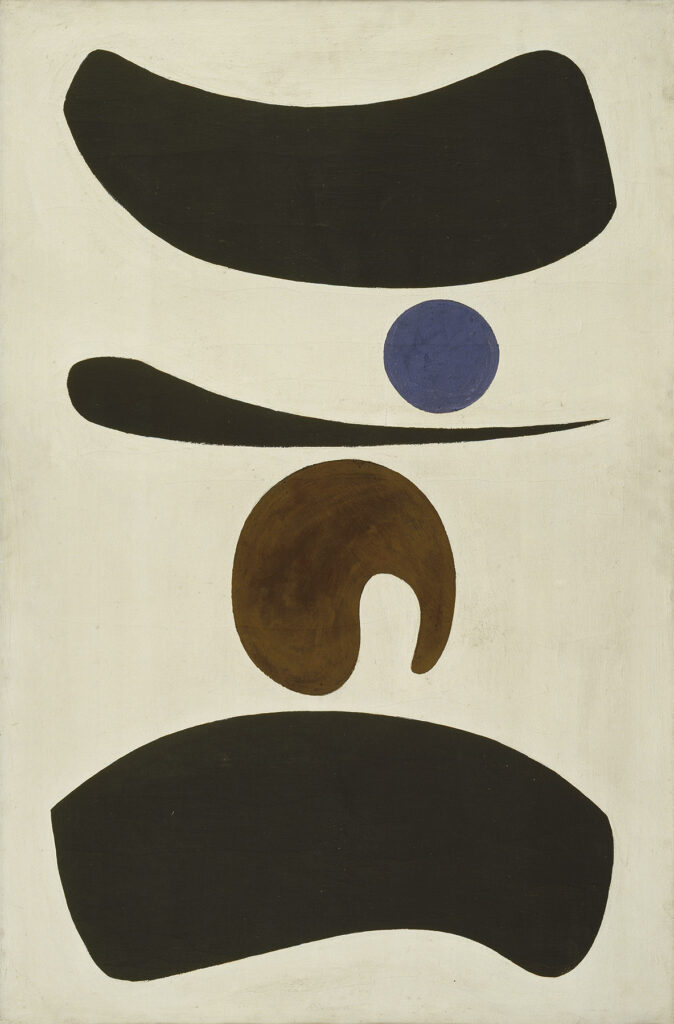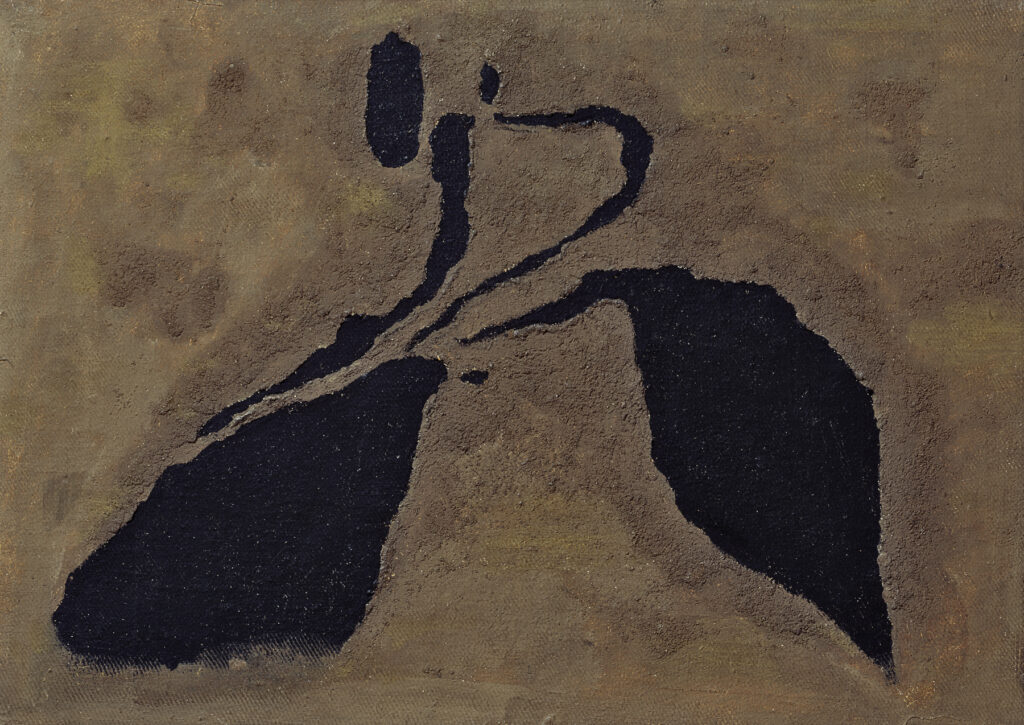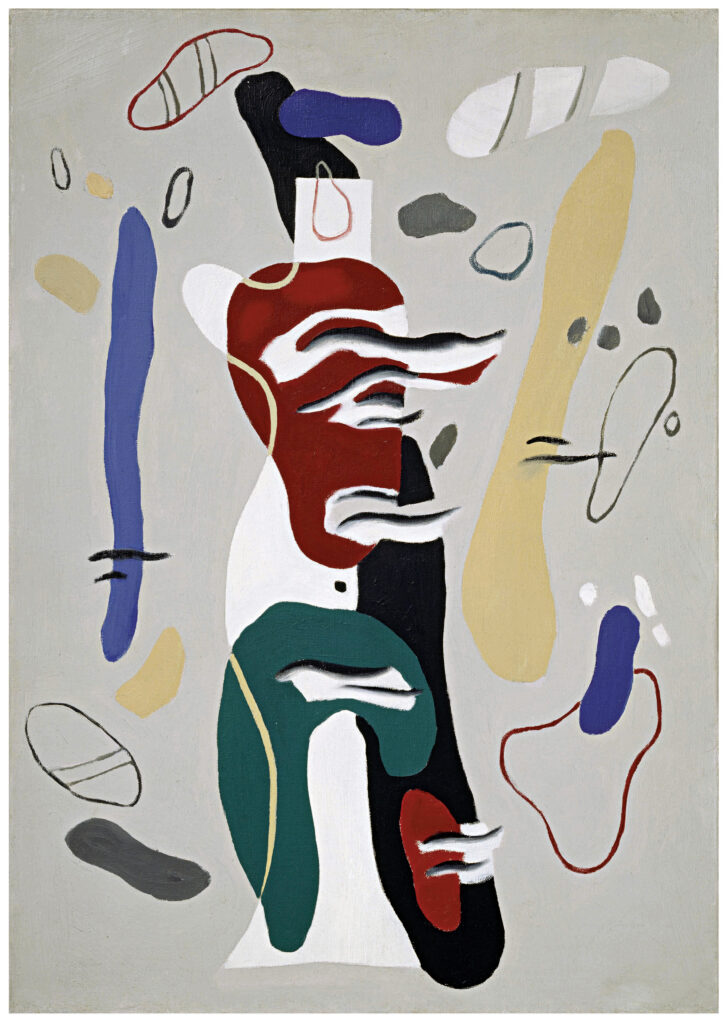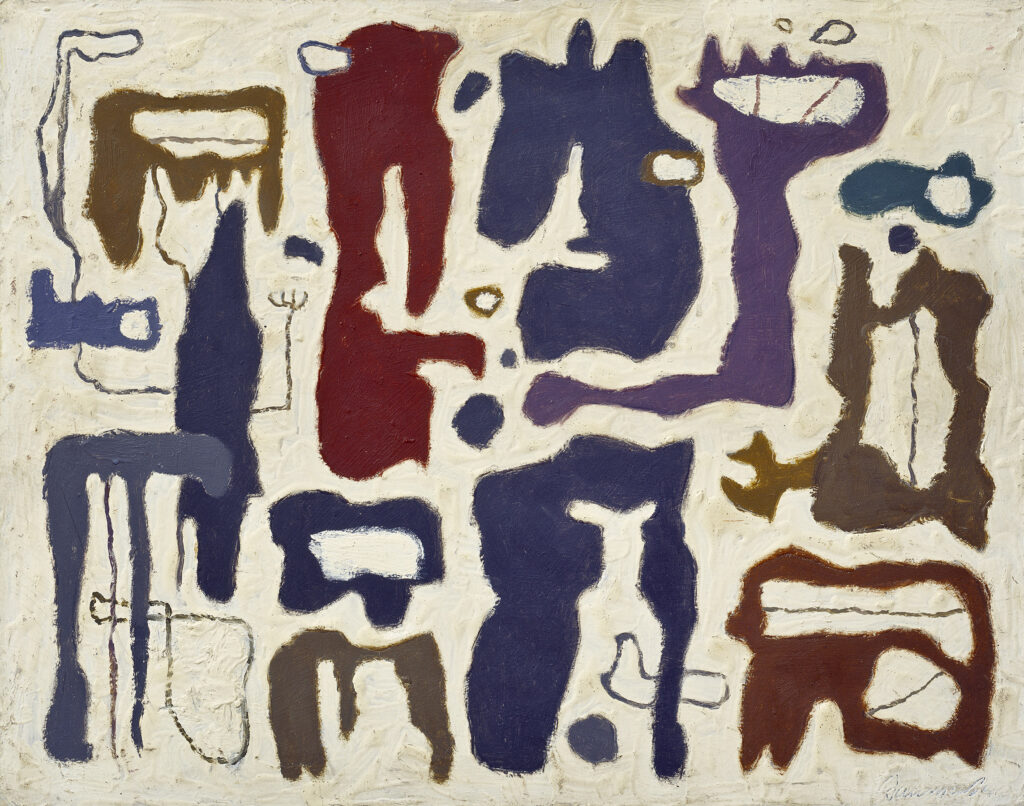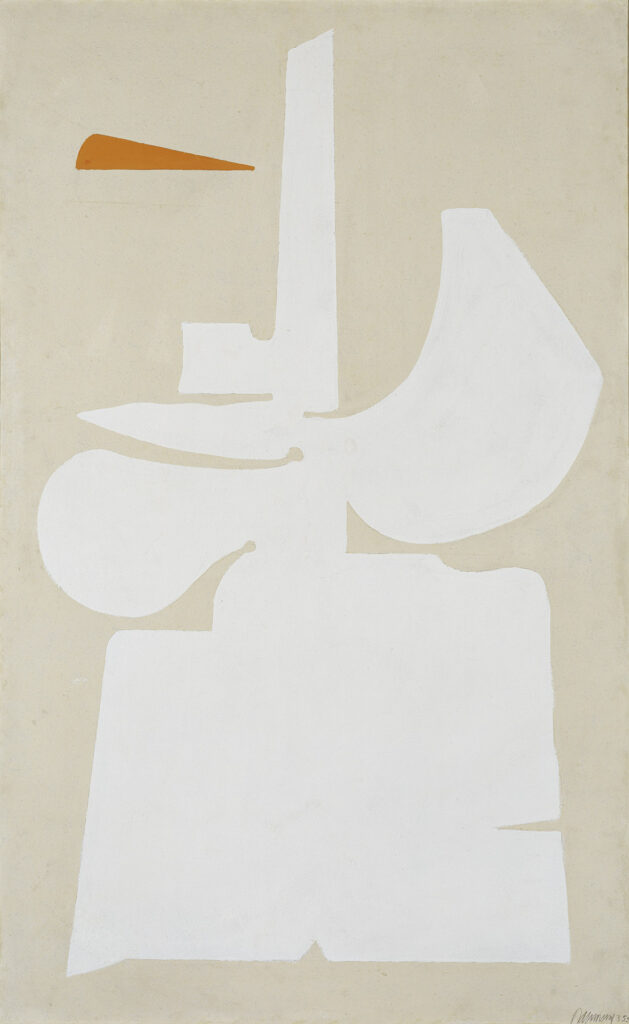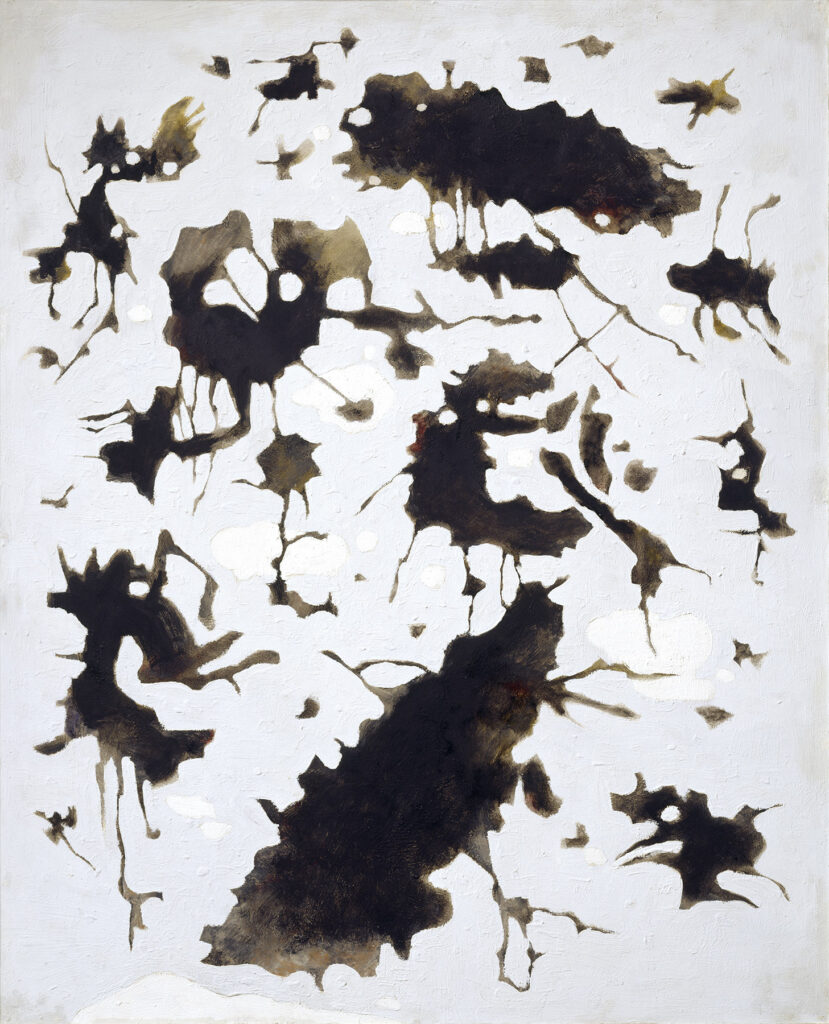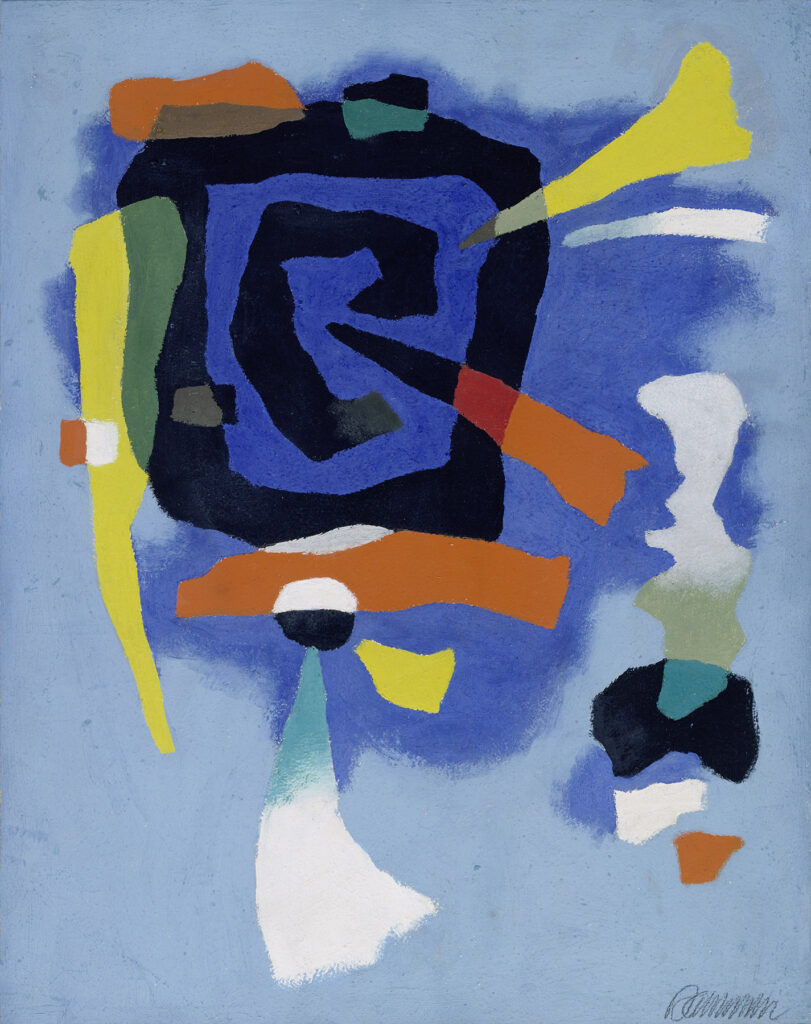Willi Baumeister’s work largely represents the development of abstract painting in Germany and Europe. His first works, though, still show the influence of his academic training and in particular the styles prevalent at the turn of the nineteenth century.
With impressionistic and postimpressionistic pictures in 1906 to 1909 that depict views of Stuttgart and park or water scenes, Baumeister first reveals French (Claude Monet, Camille Pissaro) and local influences (Otto Reiniger).
This suddenly changed when he entered Adolf Hölzel’s class in 1909 and stayed in Paris for the first time in 1911. Like many of those he met studying with Hölzel – including Oskar Schlemmer, Johannes Itten, Ida Kerkovius, and Hermann Stenner – he encountered new expressive media, the desire for abstraction, and the wrestling for the autonomy of form and color.
